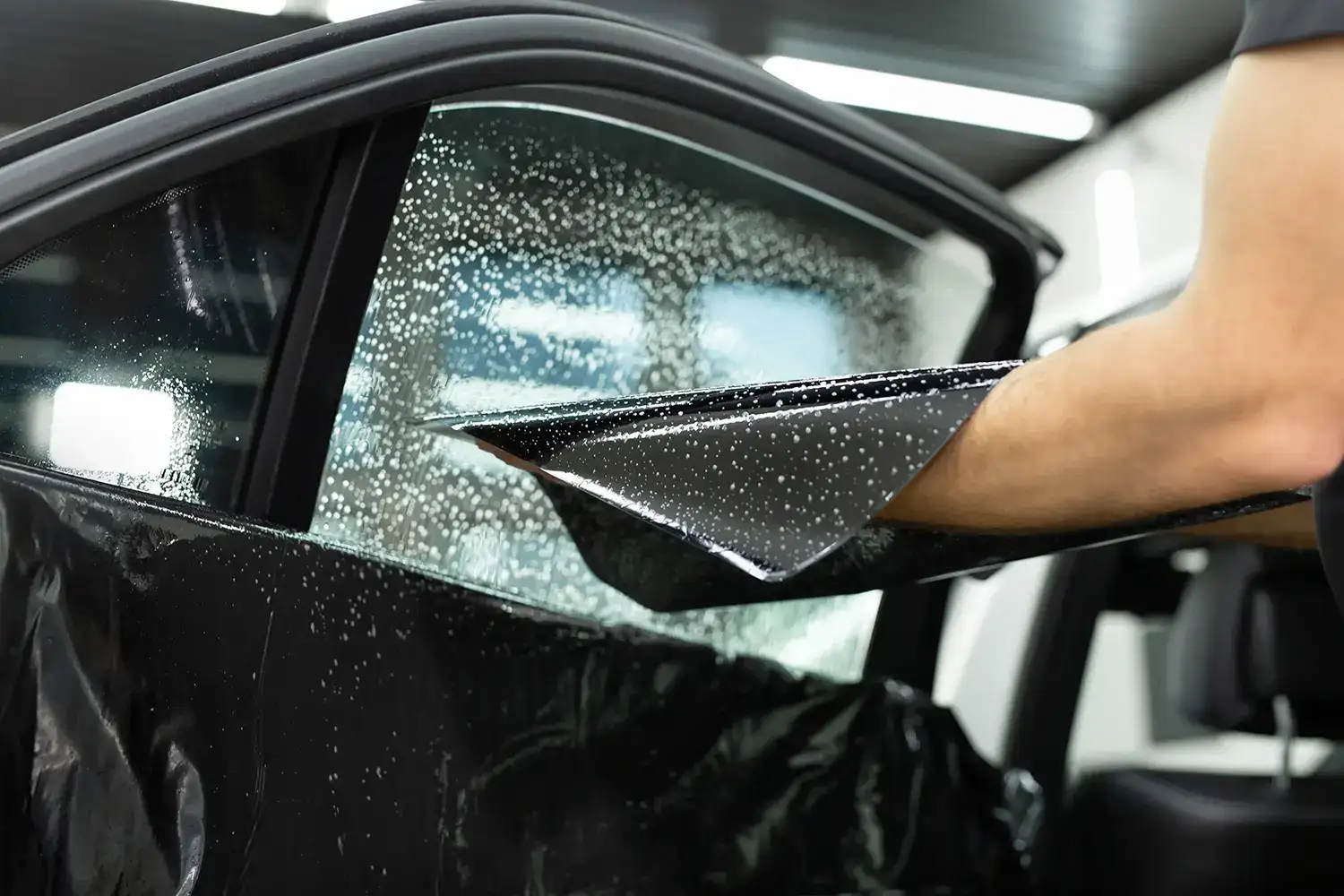The Long-Term Perks of Window Tinting for Your Car's Worth and Comfort
The Long-Term Perks of Window Tinting for Your Car's Worth and Comfort
Blog Article
The Process of Expert Window Tinting Explained
Understanding the procedure of specialist window tinting calls for an appreciation for the details involved in ensuring both visual appeal and functional quality. From choosing the right film type to the thorough preparation of windows, each action plays an essential function in achieving a remarkable application. Complying with these initial prep work, the careful cutting and application of the film demand accuracy to prevent blemishes. However, the final evaluation and advice on upkeep continue to be paramount for long-term contentment. What elements add to the overall performance of the tinting procedure, and exactly how can they impact both appearances and performance?
Picking the Right Home Window Film
Choosing the right window film involves understanding different elements that affect both visual allure and performance. The first consideration is the kind of film, which can range from colored, metalized, to ceramic movies. Colored movies primarily provide privacy and aesthetic enhancement, while metalized movies reflect warm and UV rays, improving power effectiveness. Ceramic films, although usually extra pricey, deal remarkable efficiency without compromising visibility.
Following, consider the film's Visible Light Transmission (VLT) percentage, which establishes just how much light enters the room. A lower VLT provides better privacy and warm rejection but might reduce all-natural light considerably. Additionally, the movie's solar heat gain coefficient (SHGC) is critical; a reduced SHGC suggests much better thermal efficiency, helping to maintain interior comfort.

Preparing the Windows
When the proper window movie has actually been picked, the following step is completely preparing the windows for installment. This prep work is important for accomplishing optimal adhesion and guaranteeing a flawless appearance post-installation.
The very first task entails cleaning up the home windows thoroughly (window tinting). A high-quality glass cleaner is important, preferably one that is ammonia-free to stay clear of destructive any home window seals or color products. Using a lint-free towel or paper towels, professionals must get rid of any kind of dirt, dirt, or oil, paying special attention to the sides and corners where debris often accumulates

Reducing the Movie
A precise technique to reducing the movie is essential for ensuring a perfect fit on the ready home windows. This step requires both skill and focus to information, as mistakes can cause undesirable spaces or overlaps that concession the aesthetic and useful high qualities of the tint.
Prior to reducing, the expert must determine the home window measurements properly, accounting for any type of unique forms or shapes. It is suggested to make use of high-quality window film, as this material often tends to be much more flexible during the reducing procedure. The film is generally laid flat on check my source a tidy, smooth surface area, and a sharp utility knife is used to guarantee clean sides.
To attain ideal outcomes, numerous experts use design templates developed from previous installations or make use of software program informative post to develop specific patterns. An usual strategy entails adding an added margin to the design template, permitting modifications during the application stage.
Additionally, cutting the film in a controlled setting minimizes the risk of contaminants influencing the glue side. By adhering to these precise practices, home window tinting professionals can guarantee that the movie not only fits effortlessly yet also carries out successfully in time, improving both look and capability.
Applying the Tint
After diligently cutting the film to the appropriate measurements, the following step entails applying the tint to the home window surface. This process begins with making certain that the home window is tidy and devoid of any dust, particles, or residues that might impact adhesion. A specialized cleansing service is frequently used, adhered to by complete drying out with a lint-free cloth.
When the surface area is prepared, the installer will very carefully place the color film versus the glass. It is necessary to line up the film properly to avoid misplacement, as any kind of mistakes can cause an unprofessional look. To facilitate this, the installer might utilize a light haze of application remedy on the sticky side of the film, permitting slight repositioning if necessary.
Using a squeegee, the installer will certainly after that begin to press the movie onto the glass, functioning from the center in an outward direction to eliminate air bubbles and make certain a firm bond. This method is critical, as it assures a smooth and remarkable surface. Throughout the application, attention to detail is vital to stop creases or flaws, making sure that the color not just improves visual appeals however likewise provides the preferred performance.
Final Assessment and Care
The last inspection is a critical action in the window tinting process, guaranteeing that the setup meets both aesthetic and functional criteria. Throughout this phase, specialists carefully examine the mounted color for any flaws, such as bubbles, creases, or misalignments. A complete examination likewise includes checking the adherence of the film to the glass, along with its uniformity and general look.
After the inspection, proper care and upkeep directions are given to the customer. It is vital to inform them about the suggested timeline for cleaning the tinted windows, typically advising visit this site a wait of at the very least thirty day after installation to permit the adhesive to treat totally. Clients must be enlightened on appropriate cleaning products and strategies, emphasizing the evasion of ammonia-based cleansers that can damage the tint.
Additionally, experts should suggest consumers on the value of regular upkeep to extend the life of the color. This includes periodic look for signs of wear or damages and reacting promptly to any type of problems. By making sure a detailed final examination and providing clear care standards, window tinting professionals enhance consumer contentment and the longevity of their job.
Verdict
The professional home window tinting procedure encompasses a number of essential steps that guarantee top quality outcomes. Selecting the appropriate film type, preparing the home windows meticulously, properly reducing the movie, and using it with accuracy are vital for accomplishing a remarkable surface.
Report this page